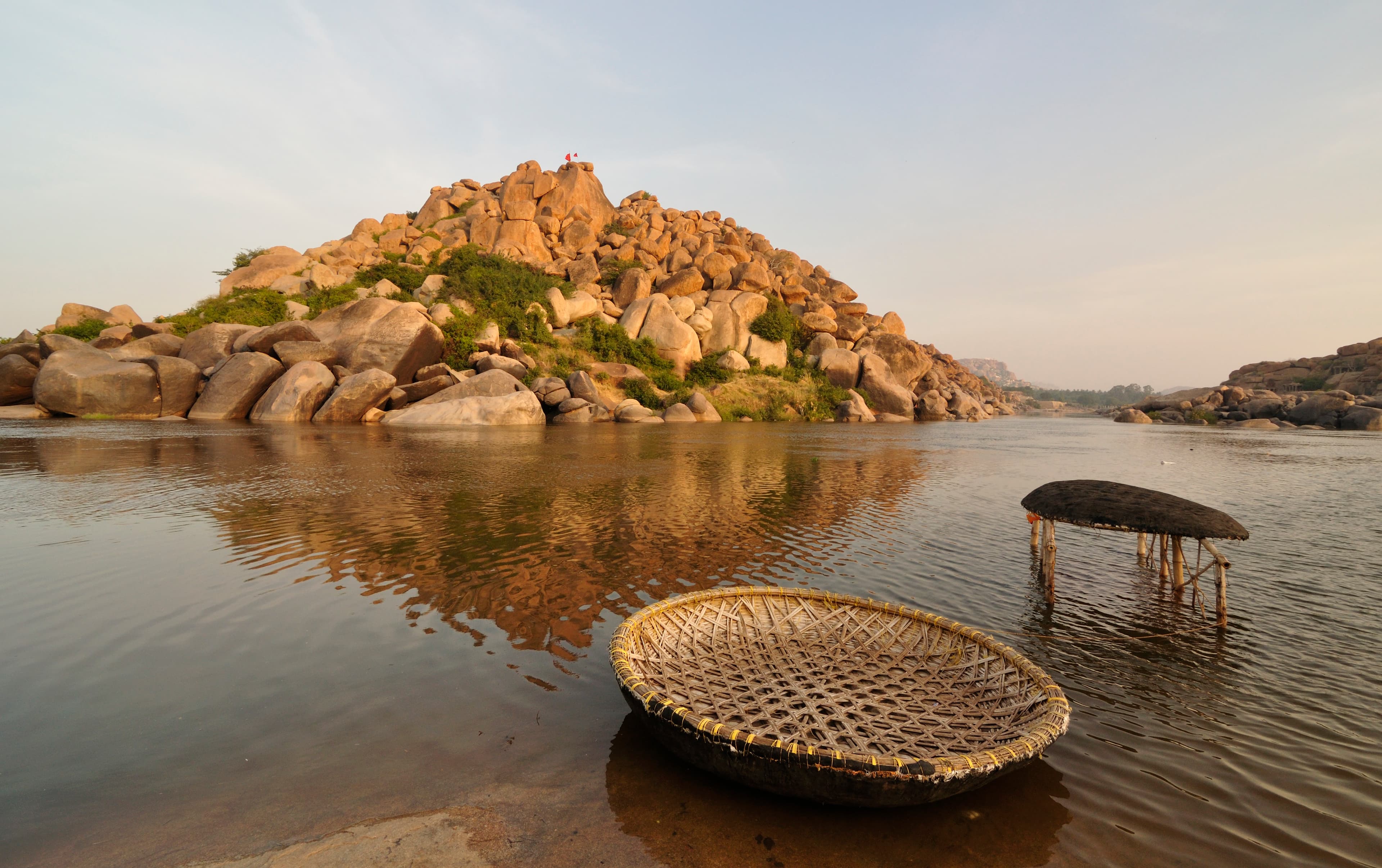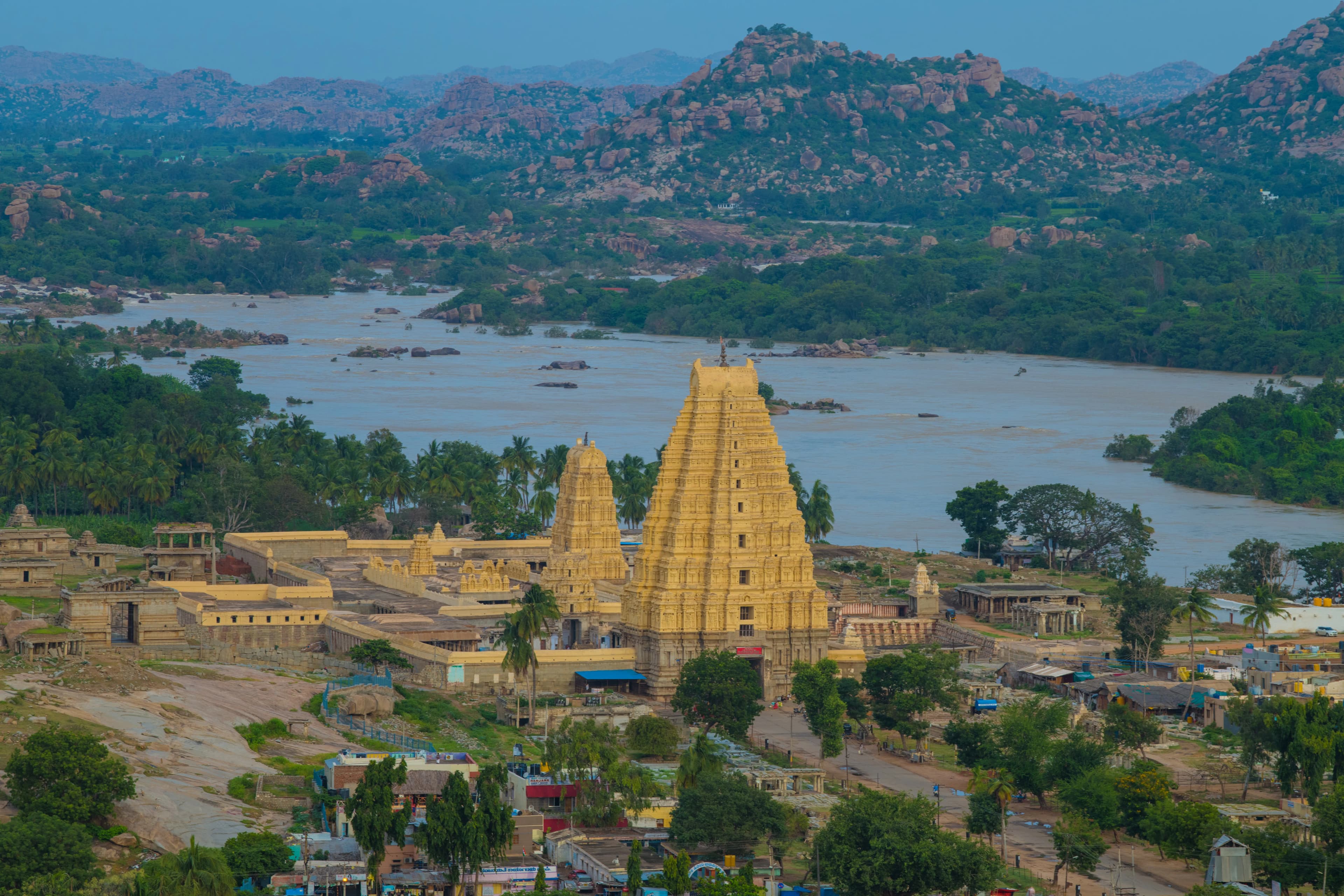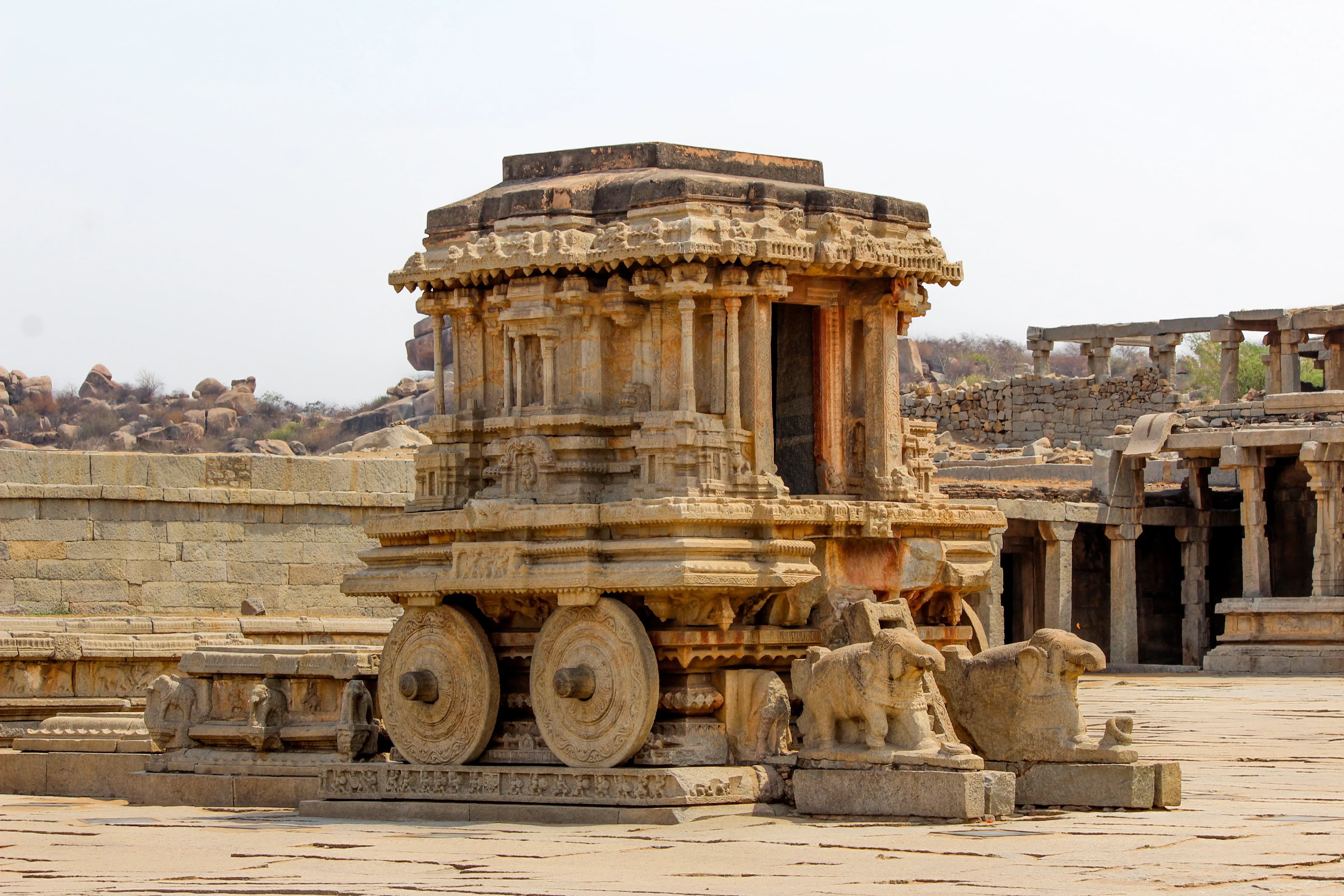Tungabhadra River

.jpg&w=3840&q=75)



Overview
How can we miss this major attraction of Hampi - ‘Tungabhadra River’! Almost all the attractions revolve around this river starting from the Vijayanagar entrance to the elephant staples. This river is formed by the union of two rivers ‘Tunga’ & ‘Bhadra which originated on the eastern slopes of the Western Ghats. Tungabhadra carries forward the stream and joins with the Krishna river which finally ends into the Bay of Bengal. The ancient name of this river is ‘Pampa’ - Pampa is the daughter of Brahma.
Here is a short story! Pampa is also considered as a form of goddess Parvati, through her devotion performed penance to impress and marry Lord Shiva, earning the name 'Pampapati'. The riparian area (Space between the land and river) where the event took place is called the Pampakshetra. The name 'Hampi' originated from the rephrasing of 'Pampakshetra'. The river also finds mention in the epic Ramayana. Lord Rama and his brother Lakshmana are said to have crossed the Tungabhadra during their search for Sita. The crossing of this river symbolizes their determination and the beginning of their journey into the Kishkindha kingdom.
The controlled network to manage the drain system! Well, this river turned out to be a blessing for all the framers holding significant value for agriculture. People took advantage of the river by constructing a host of irrigation canals and aqueducts. A highly networked water supply system fed the manmade water bodies in the urban core of the palace area. Many of the ancient canals are still in use to irrigate the surrounding agricultural fields. The water is so clear reflecting the sky and all life forms within the river, while the taste has no words to describe it. So we need to ensure that we maintain the same cleanliness throughout our visit.
Label: Must visit place
How to reach: Local Transportation - Auto, bike or bus
Timings: 6:00 AM to 6:00 PM
Time Required: 1-2 hours




